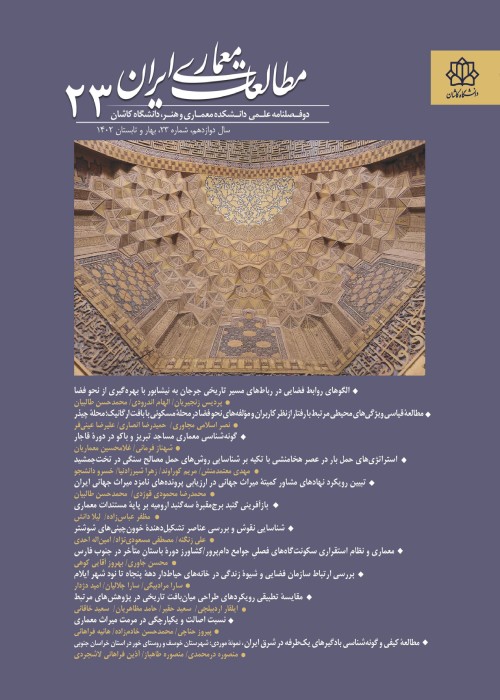A contemplation on the spatial structure and skeletal pattern of Qajar houses in Natanz
The historical context of Iranian cities shows that various factors such as climate and culture have influenced the structure and formation of residential houses. There are several traditional houses in the city of Natanz that date back to the Qajar and early Pahlavi periods. These houses, with their complex and different structure, have created a face of change in the historical context of the city. The studied historical houses have distinct functional elements compared to other residential buildings and their unique features and characteristics necessitated the present study. This article intends to introduce the historical houses of Natanz, to recognize the constituent elements and skeletal spatial features of houses, by understanding the principles and cultural values governing residential architecture, to determine their identity. In addition, by studying why and how the architectural structure of this building, a suitable and sustainable model for the architecture of modern houses in this area can be designed. The present study seeks to answer the questions of how climatic conditions have influenced the formation of the architectural pattern of Natanz, as well as what features have influenced their overall structure? How is the spatial structure and skeletal pattern of the houses of Natanz in the Qajar period expressed? It has been done with a historical approach and with a descriptive-analytical method, and in this regard, the architectural features have been documented based on the collection of library resources and field studies. To achieve this goal, 10 historical houses in the neighborhoods of Qasbeh and Afoshteh belonging to the Qajar period were examined for physical elements. The results of the research indicate the logical coordination of the spatial composition of the studied historical houses with the type of climate of the region and the change in the face of some houses is rooted in the social structure of this community. In general, the different orientation of the building and the difference in the skeletal structure of the houses on the courtyard axis as a coordinating and connecting role among other elements of the building as a thought-provoking pattern in the city of Natanz.
- حق عضویت دریافتی صرف حمایت از نشریات عضو و نگهداری، تکمیل و توسعه مگیران میشود.
- پرداخت حق اشتراک و دانلود مقالات اجازه بازنشر آن در سایر رسانههای چاپی و دیجیتال را به کاربر نمیدهد.



